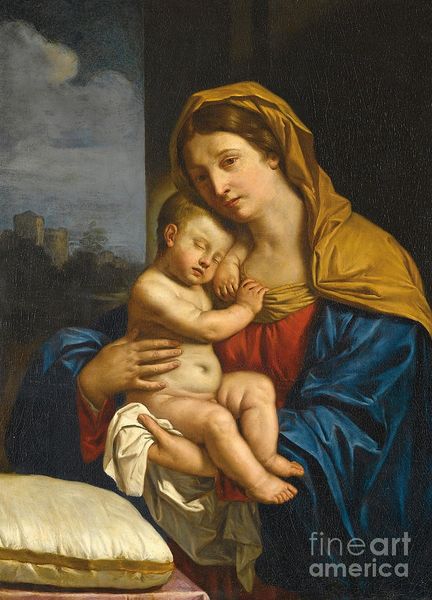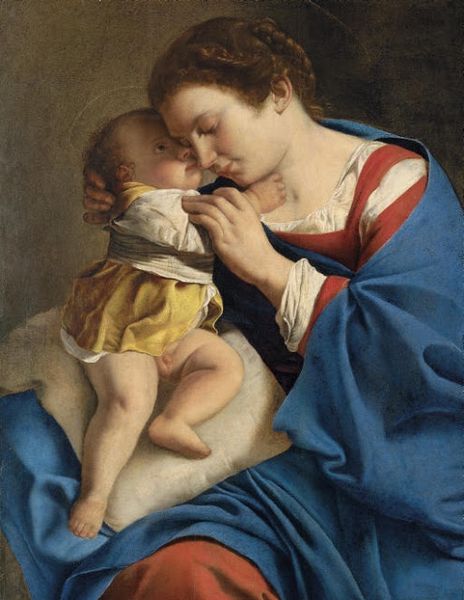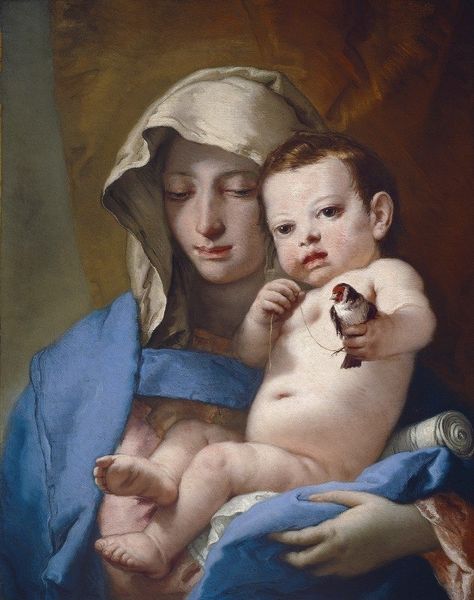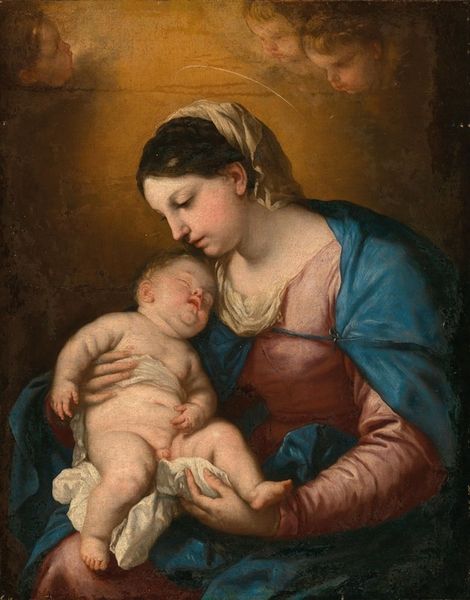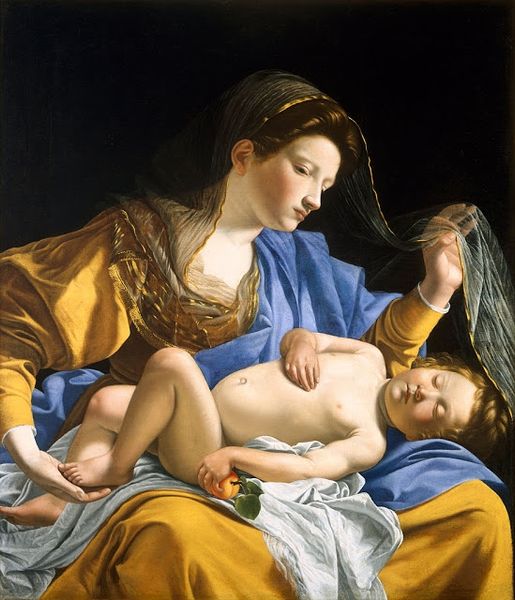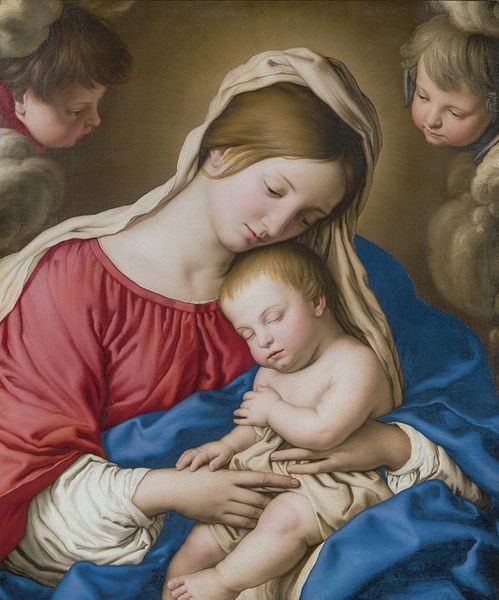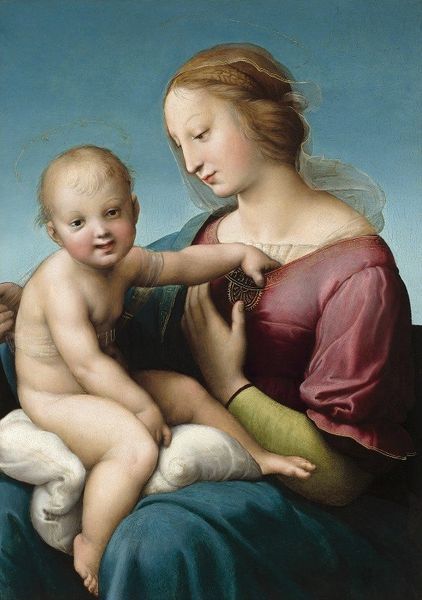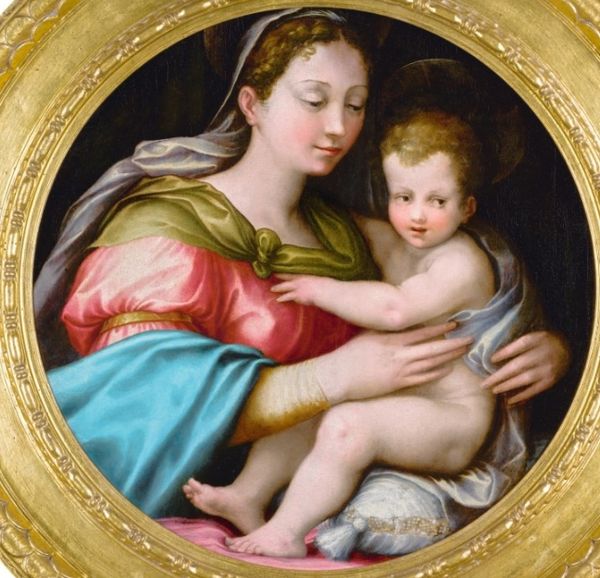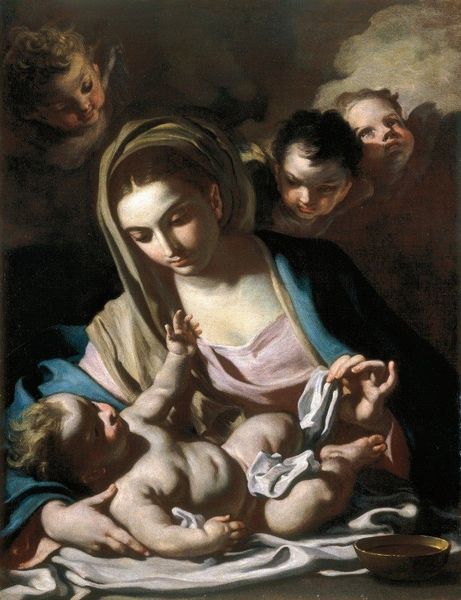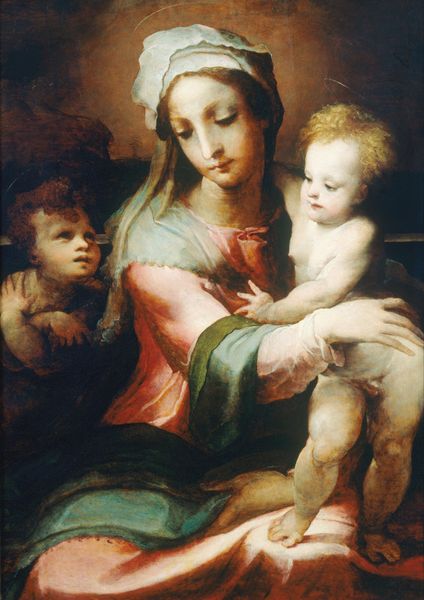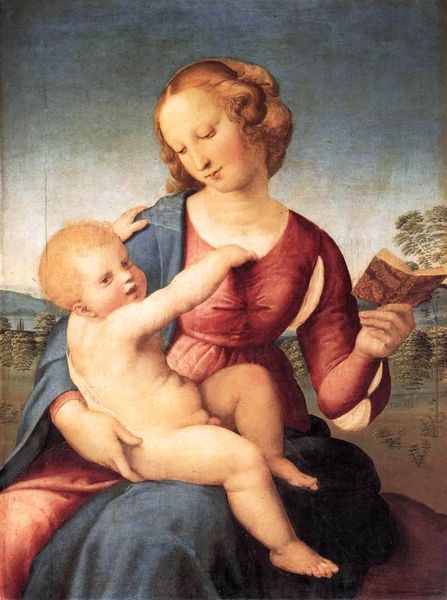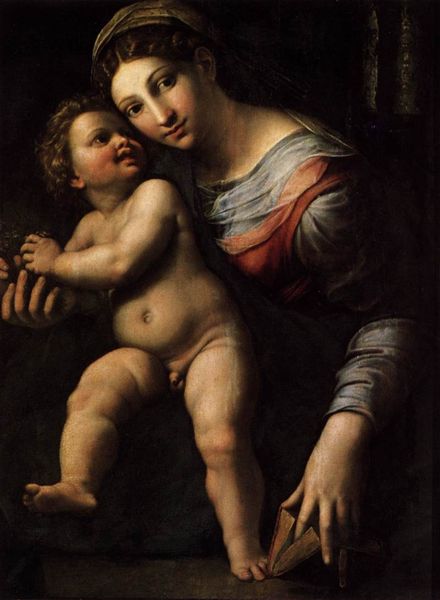
painting, oil-paint
#
portrait
#
baroque
#
painting
#
oil-paint
#
history-painting
#
italian-renaissance
Dimensions: 64.0 x 50.0 cm
Copyright: Public Domain
Curator: What strikes me first about Guercino’s "Virgin and Child," created around 1621 or 1622, is the tenderness, that deep, soul-stirring maternal gaze. The Städel Museum is lucky to have it! Editor: Soul-stirring indeed. But it's the very deliberate crafting of emotion, laid bare through visible technique, that really interests me here. Notice the bold strokes, the way light seems almost sculpted onto the figures using layers of oil paint. Curator: Sculpted is the perfect word. And that light...it's not just illuminating; it's like Guercino is wrapping the figures in a halo of humanity. She’s not some untouchable icon; she's a woman, simply holding her child, right here in this oil painting. Editor: Absolutely, the way Guercino manipulates the oil pigments makes the work less a symbol and more of a document that is tied to physical artistic labor. The viewer witnesses not just faith, but the physical properties and the materiality of the pigment, canvas, the brush strokes as their own story of labour and class. Curator: Yes, it’s earthy even as it depicts something so spiritual. Almost like we can smell the oil paint and feel the woven texture of that fantastic headscarf. Though I am drawn into considering the personal dynamic rather than thinking so technically. How can you think about oil paints when they both seem so very much alive in the moment? Editor: "Alive" is one word for it, and perhaps “commodifiable" is another, in that paintings themselves also are produced to be traded, valued, and placed into other class dynamics outside of faith itself. They serve as artifacts that reflect social and class relations in their physical objecthood. Curator: Maybe! For me, the appeal isn't about status at all but what Guercino suggests of the inner life between mother and child in this work of devotional Italian history. It makes my own inner child jump for joy and want to live more freely and truthfully. Editor: Truthfully…and materially considered. That interplay, between artistic feeling and material production, is why the "Virgin and Child" remains such a vital piece.
Comments
Join the conversation
Join millions of artists and users on Artera today and experience the ultimate creative platform.
